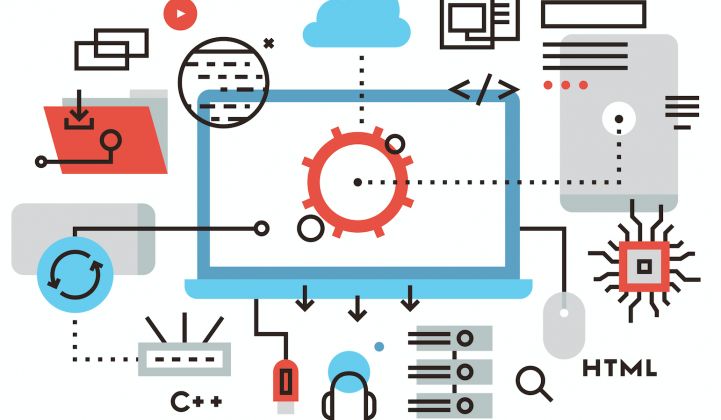Today, large companies often prioritize resources and investment for their core competencies, while everything non-core becomes eligible for outsourcing. Outsourcing makes them more efficient and saves them money over the long term. Ironically, knowing how to outsource has itself become a core competency.
In the 1980s many companies deemed internally managed enterprise software to be core. Oracle and SAP sold big licenses, while companies built internal teams to develop modernized, process-centric implementations. Companies bet that distributed, flexible IT was long-term core.
In the 1990s, software pulled a reversal, as internet-based software started taking down industries, first newspapers, then music and entertainment, then telecommunications.
Open network software eventually started to attack every business, forcing each to decide if internally developed software needed to be core. Banks voted yes, and recognized security software to be just as critical. Insurance, retail, logistics and healthcare all followed the same path. Third-party cloud vendors marketed how they could help with outsourcing software applications, but “core” areas got dedicated internal teams.
The banking industry’s new fear is bitcoin and blockchain software. Tesla is the threat for Toyota, GM and Ford. The big guys recognize that designing and manufacturing a new electric vehicle is nowhere near as daunting as developing a software-based, driverless, perpetually learning, cloud-connected mobility system. Now they’re racing to establish R&D labs in Silicon Valley, hire software engineering teams and develop their own software competencies. What an ironic twist for an industry that has historically outsourced everything.
From our point of view at Groom Energy, we’re asking the question: Are utilities next?
Today’s utilities are not forward thinkers in software.
Regulated electric utilities have long specialized in reliably running a central plant and wire lines connected to a captive set of customers. The business has a conservative, long-term view and public market investors buy into modest, predictable returns, without significant upside or downside. The biggest tensions come after storm outages, when utilities renegotiate for ratepayer funded T&D upgrades. Developing customer facing software hasn’t been urgent or core.
But the energy services market has become a customer-centric world.
A few years ago, Opower launched a business by taking a utility’s own customer usage info, building a bar chart comparing a homeowner’s usage to the next-door neighbor, then selling it back to the utility for inclusion in their customer’s monthly bill. The behavior tool was novel. But anyone with a software background wondered why utilities couldn’t figure out how to use their own customer data to develop this simple customer analytics tool.
The smart meter wave was supposed to help utilities get closer to their customers' needs.
Yet thus far, the benefits have more been for reducing physical metering costs vs. the electronic capture of customer usage data. Itron and Silver Spring are busy developing rollouts with their outsourced utility managed service offerings. Meanwhile, like the rest of corporate America, the utility’s network is being attacked (literally) and these network security challenges are not something they can easily outsource.
J.D. Power’s annual customer satisfaction survey confirms that utilities have lagging customer satisfaction levels. Even the airline industry outperforms virtually all utility providers.
For energy services, consumers and businesses want their energy demand managed intelligently, with grid requirements integrated into the software that runs their homes or buildings. Their own grids can now include solar, wind or CHP, along with storage, a growth market where utilities are partnering principally to respond to the regulator’s mandate. Customers need an integrated electronic solution, and although the utility is the logical service provider to deliver it, its not clear they can do it without a heavy investment in software.
So utilities are at a crossroads to decide if, and where, they should make software investments. And their decisions now will have long-term implications.
The industry’s software skills vacuum is the reason companies like Apple see opportunity and are considering entering the market. Even regulators see the problem and are willing to fund utilities to develop their own cloud-based software skills. If regulators see an innovation gap, you have to wonder if it’s a little too late.
Utilities could still invest to develop integrated virtual energy management solutions that leverage their existing customer relationships and brand names.
But it's also possible that energy management will be conducted through Amazon Prime or iTunes, while regulated utilities’ core will just be running transmission and distribution with fleets of maintenance trucks.
You can bet a 2025 Harvard Business School case study will detail how it plays out.
***
Jon Guerster is the CEO of Groom Energy Solutions.



